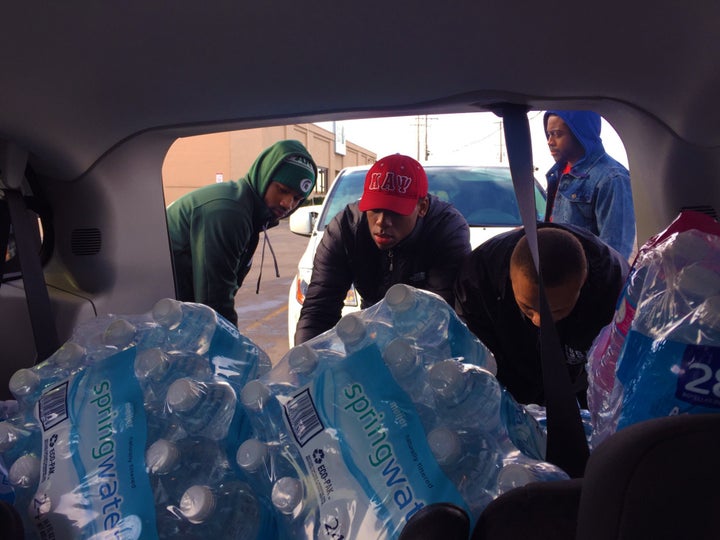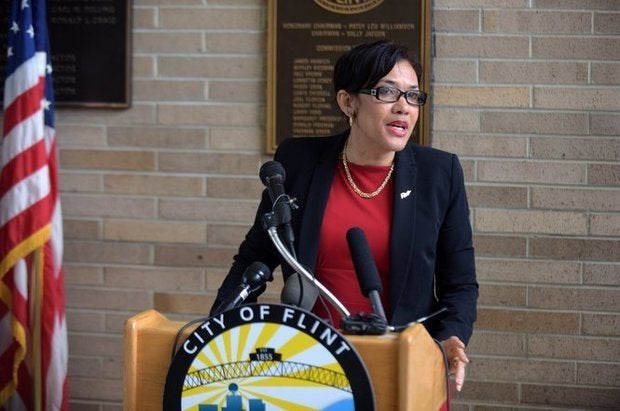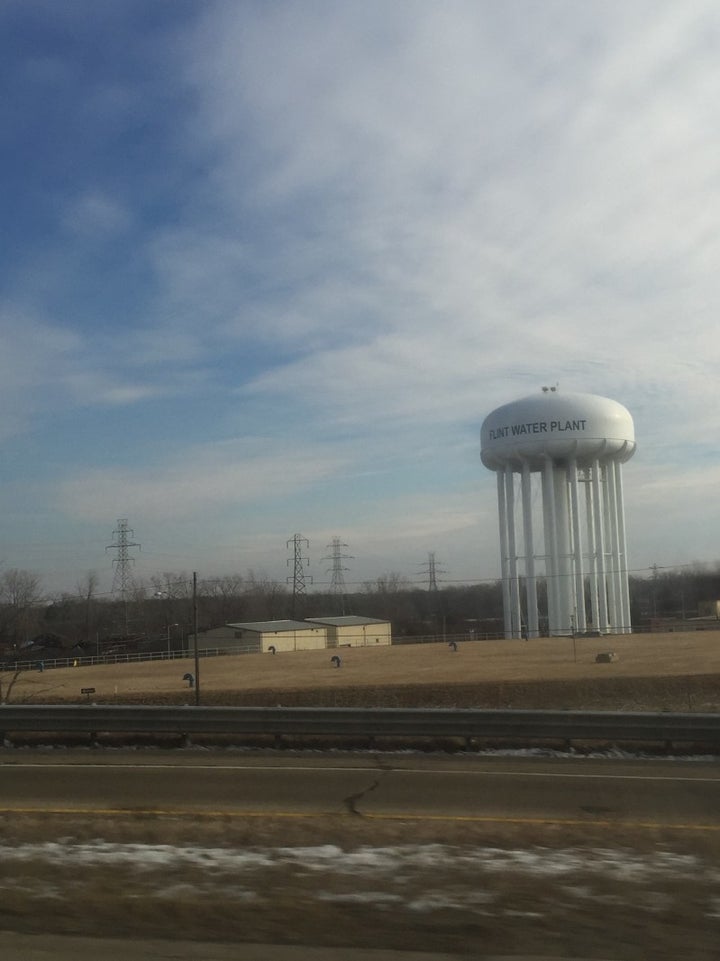
Loading up a van of bottled water back when I volunteered in Flint in January 2016.
Near the end of January of this year I traveled with my fellow Michigan State University students to Flint, Michigan to help deliver cases of bottled water to the community. At that point the water crisis was just beginning to be exposed to the country and world. Now almost a year later the situation seems to be at a tipping point with politicians saying one thing and environmental experts saying another. The reality is that Flint still does not have clean water with many residents still needing bottled water and/or filters in their homes.
There are two realities co-existing at the moment in the state of Michigan: researchers have found that Flint’s water is improving and a U.S. District judge has ruled that state officials still need to continue delivering bottled water to residents. So, what is going on in this once booming city that has been in the headlines for over a year?
“In a perfect world, we should fix all the problems ... It would be nice to get rid of the water service lines, but if residents have lead filters -- that eliminates not only lead in their service lines but inside their homes. To me, the biggest problem going forward is affordable water." -Marc Edwards
As of December 2nd researchers from the University of Michigan found that 29, 100 homes need water lines replaced in flint, according to MLive. Flint Mayor Karen Weaver launched a program in March called Fast Start that, at the time, estimated 15,000 lines would need to be replaced, since the launch 500 homes have had service lines replaced with an estimated 1,000 to be completed before the clock strikes midnight on January 1st. With this in mind Fast Start coordinator Michael McDaniel says that the $25 million given to the program for this replacement project is not enough to replace the estimated 5,000 homes that would require new pipes.
In a recent meeting at the House of Representatives in Washington D.C. Representative Dan Kildee D-Flint argued for more aid stating, “One hundred thousand people, citizens of that city, still cannot drink their water, exposed to high levels of lead. We have a tradition in this country of always coming together for those who are facing a crisis, for those who are in great need. It is incumbent now upon Congress to do the same, to come together to help the people of Flint." Due to the level of lead in the water exceeding the action level of 15 parts per billion as mandated by the federal government the city must replace over 2,000 service lines by June 30, 2017.

Flint Mayor Karen Weaver began the Fast Start program in March which has only completed restructuring 500 lines in the city.
As researchers announced that Flint’s water quality was vastly improving “a key national monitoring the city’s tainted-water crisis says it may never truly be safe enough to drink until all lead pipes are pulled from the ground” despite the work that has already been done. These researchers are headed by Virginia Tech professor Marc Edwards who made these details public in a recent news conference.
Despite these new findings Flint residents have been urged to continue consuming water through either a filtered system and.or bottled water. With this insistence and new findings in mind U.S. District Judge David Lawson ruled on December 3rd that the state still needs to deliver bottled water to the city. In an interesting turn of events those who were arguing against this mandate argued that this method is “overly broad and too expensive” costing nearly $10.5 million per month.
"Flint residents continue to suffer irreparable harm from a lack of reliable access to safe drinking water. This is more than a mere inconvenience; hunting for water has become a dominant activity in some residents' lives, causing anxiety, stress and financial hardship." -U.S. District Judge David Lawson
While the battle and work continues between state and federal officials Flint residents are taking it upon themselves to demand more from the government when it comes to water quality and safety. Media attentions has increased over the past few months regarding another protest against the now famous Dakota Access Pipeline. Locals and Native American members of the Standing Rock tribe have been protesting since early spring for an oil corporation to not construct a pipeline that would pass through sacred native American land. As the DAPL protests continue a group of Flint residents are making the journey to the reservation in North Dakota to show support.
One such resident is Arthur Woodson who, with over 3,000 others, is joining a group of military veterans who are traveling to the site of the protests to show their support. Woodson remarked that, “ I am going because my veteran brothers and sisters called out and asked for the veterans to come and help support the native Indians for their land. It's the same thing with Flint. The people need to start standing up together in unity instead of worrying about what color they are and what (political) party they are. We are driving 17 hours to stand in unity."
While residents continue to fight to be heard and taken care of Flint Mayor Karen Weaver has made it clear she will not stop, “Water is a basic human right.” As I reflect back on that day I went to volunteer I remember those resilient community members who showed me nothing but gratitude. Some people had just returned from the hospital after falling ill, others simply thanked you with a hug and a kiss on the cheek, and every single one of them shared their sadness and frustration.
Let us not forget these strong residents whether we live 40 miles or 2,000 miles away.

The large water tower that greets you upon your arrival to Flint
